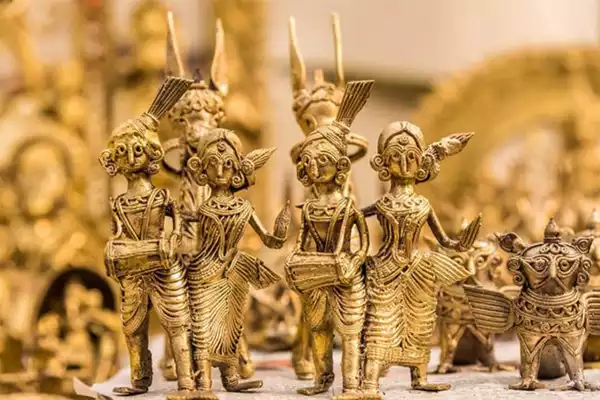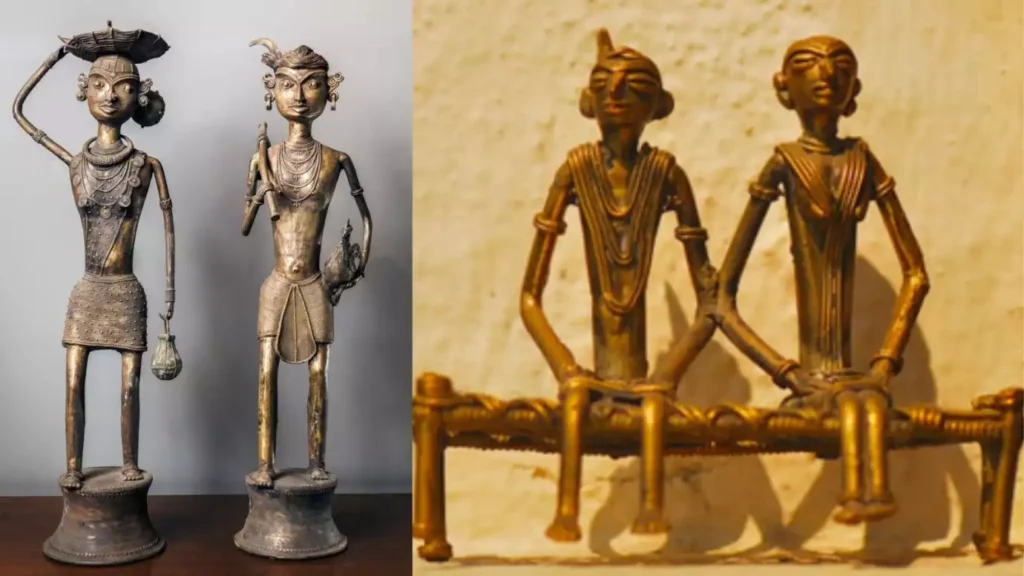Discover the revival efforts of Dhokra Shilpkala, an ancient lost-wax metal casting technique dating back over 4,000 years, recently undertaken by a private organization.
About the Dhokra Shilpkala:
- The Dhokra Shilpkala is an ancient lost-wax metal casting method, over 4,000 years old, originating from the tribal communities of Chhattisgarh, Jharkhand, West Bengal, and Odisha.
- It evolved from the ‘Sayre-Parieu‘ method, possibly named after the Dhokra Damar tribes, traditional metal smiths of Central India.
- This craft is a vital part of the cultural and religious practices of the tribes, with designs inspired by nature, mythology, and everyday life, featuring motifs of animals, birds, deities, and tribal symbols.
- Threatened by urbanization, a declining number of skilled artisans, and modern materials, Bastar Dhokra of Chhattisgarh has received a GI Tag for its uniqueness.
About the Lost wax method:
- The lost-wax method involves creating a wax model, coating it with clay, melting out the wax, and casting metal in the hollow space, known also as cire perdue.
Still practiced in various parts of India, this technique has produced renowned artifacts like the Bronze Dancing Girl of Mohenjo-daro and the bronze bull of Kalibangan
Ref: Source
| UPSC IAS Preparation Resources | |
| Current Affairs Analysis | Topperspedia |
| GS Shots | Simply Explained |
| Daily Flash Cards | Daily Quiz |



